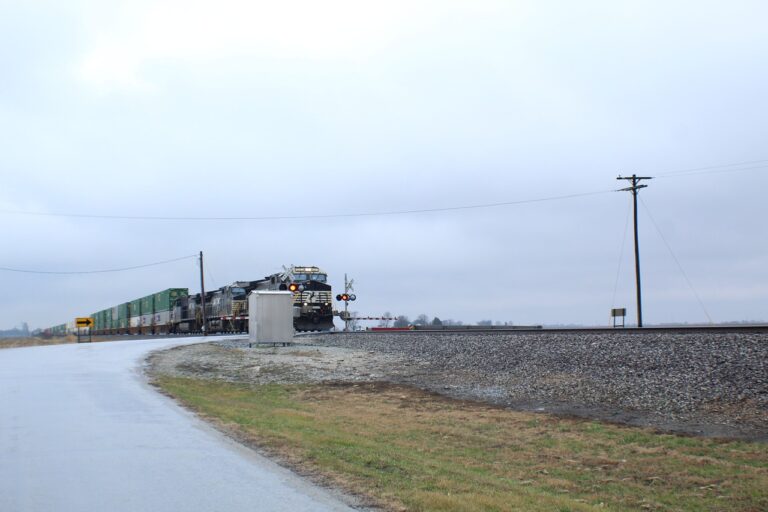The Impact of Autonomous Vehicles on Traffic Congestion Management
Autonomous vehicles have emerged as promising solutions to alleviate the growing problem of traffic congestion in urban areas. By utilizing advanced technology such as real-time data processing and machine learning algorithms, these vehicles can optimize traffic flow, minimize delays, and reduce overall congestion on roadways.
The ability of autonomous vehicles to communicate with each other and with surrounding infrastructure enables them to navigate through traffic more efficiently than human drivers. Through coordinated movements and predictive analytics, these vehicles can adjust their speed and routes to prevent bottlenecks and congestion hotspots, ultimately contributing to a smoother and more streamlined traffic experience for all road users.
Challenges Faced by Autonomous Vehicles in Managing Traffic Congestion
Autonomous vehicles are heralded as a promising solution to managing traffic congestion in urban areas. However, several challenges hinder their effectiveness in tackling this issue. One primary obstacle is the integration of autonomous vehicles with traditional human-driven cars. The unpredictability of human drivers and their varying driving behaviors pose a significant challenge for autonomous vehicles to navigate seamlessly through traffic.
Another notable challenge is the lack of standardized regulations and infrastructure to support the widespread implementation of autonomous vehicles. Without clear guidelines and proper infrastructure in place, autonomous vehicles face difficulties in efficiently managing traffic congestion. Additionally, issues related to cybersecurity and data privacy raise concerns about the safety and reliability of autonomous vehicles in navigating congested roadways. Addressing these challenges will be crucial in unlocking the full potential of autonomous vehicles in effectively managing traffic congestion.
The Potential Benefits of Autonomous Vehicles in Traffic Congestion Management
Autonomous vehicles have the potential to play a significant role in alleviating traffic congestion in urban areas. By utilizing advanced technology such as AI and sensors, these vehicles can analyze traffic patterns in real-time, optimize routes, and coordinate with other autonomous vehicles to ensure smooth traffic flow. This can help reduce the overall number of vehicles on the road and minimize instances of gridlock, thereby improving the efficiency of transportation systems.
Moreover, autonomous vehicles have the capability to communicate with each other and with infrastructure elements such as traffic lights and road signs, leading to improved coordination and synchronization on the roads. This enhanced communication allows for more efficient merging, lane changes, and intersections, ultimately leading to a more seamless driving experience for all road users. Overall, the integration of autonomous vehicles into existing transportation networks shows promise in not only reducing traffic congestion but also enhancing overall traffic management strategies.
• Autonomous vehicles can analyze traffic patterns in real-time
• Optimize routes and coordinate with other autonomous vehicles
• Reduce overall number of vehicles on the road
• Minimize instances of gridlock
• Vehicles can communicate with each other and infrastructure elements
• Improved coordination and synchronization on the roads
• More efficient merging, lane changes, and intersections
• Seamless driving experience for all road users
How do autonomous vehicles help in reducing traffic congestion?
Autonomous vehicles can communicate with each other to maintain a steady flow of traffic, reducing the likelihood of accidents and traffic jams caused by human error.
What are some challenges faced by autonomous vehicles in managing traffic congestion?
Challenges include integrating autonomous vehicles with traditional vehicles, navigating complex traffic patterns, and ensuring the safety of passengers and pedestrians.
What are some potential benefits of autonomous vehicles in traffic congestion management?
Some potential benefits include improved traffic flow, reduced travel times, lower emissions, and increased road safety for all motorists.
Can autonomous vehicles completely eliminate traffic congestion?
While autonomous vehicles can help reduce traffic congestion, other factors such as road design, urban planning, and population growth also play a role in managing traffic flow.
How can policymakers and city planners leverage autonomous vehicles to improve traffic congestion management?
Policymakers can incentivize the adoption of autonomous vehicles, invest in smart infrastructure, and develop regulations that support the integration of autonomous vehicles into existing transportation systems.







